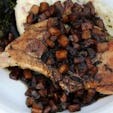An athlete all his life, Anthony Mejia, 47, of Huntington Beach, Calif., thought fitness was something that could be won with hard work. But competing in the Onnit 6 Challenge and “losing” taught him more about how to transform his body, mind, and spirit than winning ever did.
In our new Onnit Stories series, we interview a different person every week that’s made an inspiring life change since joining the Onnit community, so they can tell you about their journey in their own words. This week, Mejia tells the tale of how Onnit, the Onnit Tribe, and the steel mace he loves so much he plans to name it helped him take a slower, steadier approach to working out that, ironically, improved his life faster than anything else he’d ever tried.
New Onnit Stories appear weekly on Onnit’s Instagram TV (IGTV). See below for the video, and an edited transcript of the conversation Mejia had with Onnit’s Director of Fitness Education, Shane Heins.
Interview with Anthony Mejia
Shane Heins: Hi, everyone. Welcome to Onnit Stories live. I want to take this opportunity to introduce myself and give you guys an idea of what we’ve got going on here. My name is Shane Heins, I’m Onnit’s Director of Fitness Education, and I am representing Onnit today for this installment of our Onnit Stories series. At Onnit, we believe that storytelling is such a powerful medium to be able to highlight how our community members and customers make their way on their Total Human Optimization journeys—something that we’re all working toward together.
We’re here to share these amazing stories about real people who have made incredible changes, incredible transformations, experienced incredible growth, and evolved in their own lives since connecting with the brand. We want to be able to highlight their stories and celebrate that, in the hope that you will find inspiration from their stories. To kick off our Onnit Stories series, we are going to have with us a gentleman by the name of Anthony Mejia.
Anthony is a member of our Onnit Tribe. So for anybody who doesn’t know, Onnit has a Facebook group that is open to everyone and anyone that wants to join it. It’s called Onnit Tribe, and that’s how we’ve been able to connect with Anthony.
Welcome, Anthony!
Anthony Mejia: Hey, Shane, how are you doing?
Heins: I’m doing very well. Thank you. So great to have you on to kick off the Onnit Stories series!
Mejia: Thanks for including me.
Heins: To get us started, I would love to hear you tell us a little about yourself and when your path crossed with Onnit’s. Take us from there.
Mejia: OK. I originally found out about Onnit by watching Eric Leija on some Instagram videos. He was doing some kettlebell flows, and when I watched those flows, I knew that was something that I wanted to be a part of. The movements and everything, I thought it was really awesome. I had taken a free kettlebell class years prior, so I had been interested in kettlebells for a while. Then, when I started watching him, I knew that was something I wanted to explore.
So I would take my phone and go to the gym and try to follow his workouts—feeling a little awkward having the phone on the floor in front of me. But then I started to get the movements down and I really enjoyed them. So that was my introduction to Onnit, but that was it—just kind of following Leija and knowing that he used Onnit kettlebells.
I work from home and I have a busy schedule. I’m also taking care of a toddler. I work a second job at nights, and I’m in a blended family, so my sons are across town. It’s a lot of back and forth, and it doesn’t allow me a lot of time to do a lot of things. Last year, when things started to slow down due to the pandemic, I got an email about the Onnit 6 Challenge and I signed up. I’d never purchased anything from Onnit before. I’d never done anything with Onnit other than follow Leija’s workouts on Instagram.
That was the launch pad for me. I did the six-week kettlebell Challenge and my girlfriend, Emma, joined in with me. It really brought us together, and we were able to do it from home.
Heins: That’s awesome. I know a little bit more about you than the folks out there, so I’ll share something. I know that movement, in some form or another, has always been a part of your life. You have a background in skateboarding, and some surfing and snowboarding, and things like that. Can you tell us about that?
Mejia: Yeah, I was on a skateboard ever since I was a pre-teen, and then I moved into surfing, and then I got into snowboarding. Anything on a board! I became a father really young, and I picked a path that kind of almost goes along with what some of the skateboarding community is into. I went down another path¦ But being active has always been in my life. Feeling the fluidity of my body, and movement, has always made me really happy.
Heins: So what was it about seeing Eric’s movement with the kettlebell that triggered something for you?
Mejia: Well, I think seeing Eric and the kettlebell flows reminded me of the art of skateboarding or surfing or doing any of that—there’s an art to it. When you’re doing it at a certain level. The way he moved was like an art, and I’ve learned that with a lot of the other tools too—most importantly with the steel mace. I really learned what the art of working out was when I got a hold of the mace.
Heins: I think you bring up a really good point in that you’ve found a great identifier for the exploration. You explore movement through your workouts. I think that when a lot of folks are introduced to Onnit’s workouts, they can sometimes be put off by them because it’s counter to what they’re used to knowing as working out. We used to get a lot of comments like, “You guys aren’t really working out; you’re just dancing. That’s what it looks like.” And here you’ve brought up this idea of expression and you used the word “art.”
There is art in movement, artistic expression, in training with kettlebells and the steel mace just as you’ve found there is with skateboarding, surfing, or snowboarding. So, with Eric Leija, here’s this guy who’s obviously fit, but there’s also an art to what he’s doing. And I love that sense of art, because for me, it connects to this idea of the art of living.
So whether you’re moving on a skateboard or you’re doing it in more of a workout context, you can connect to this feeling of the art of expression. Developing and refining your personal expression then translates into the ongoing journey of the art of living. And I think one of the beautiful things about your journey is that, while you have this full schedule, you take care of a toddler, and through the challenges of this past year especially, you’ve found something that you can do from home that connects you to the Onnit Tribe. That’s you artfully living. Trying to find a balance to it all is like an artist asking, “What are the colors? What are the curves?” Or a skateboarder asking, “What are the flip kicks and the spins?”
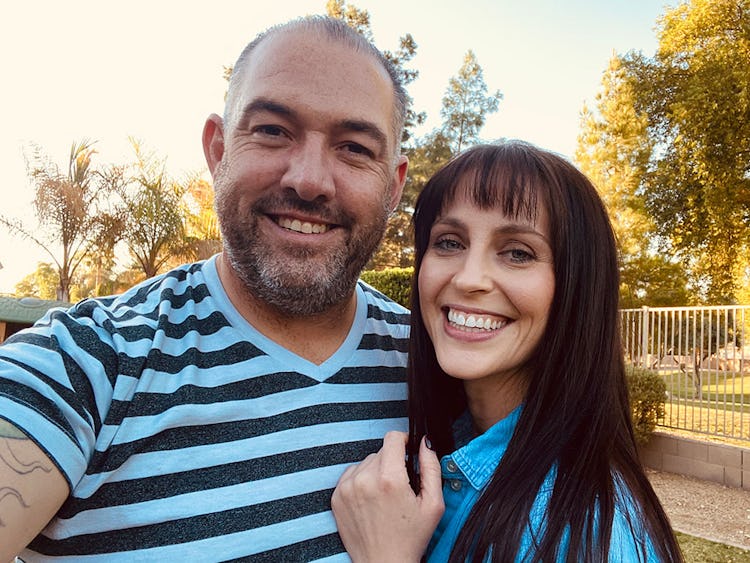
Mejia: Well, thanks. [Laughs]
Heins: How has the experience of going through the Onnit 6 Challenge been for you? We want to remind people that one doesn’t have to be in the Onnit Tribe Facebook group to do the Onnit 6 Challenge, and anyone can choose to be a part of the Onnit Tribe. Please share a little bit of what that has been like for you.
Mejia: I think of things from the perspective of a journey. Taking the Onnit 6 Challenge and getting involved in the Tribe has really been a journey for me. Part of my journey is that I’m in recovery—I’ve been sober for a little over five years. Getting to that point where I can kind of move forward in life made it possible for me to come to Onnit in the first place. In recovery, the best thing I learned is that I don’t know anything. In coming to Onnit, joining the Tribe, I had to remember that I still had a lot to learn.
When I did my first Challenge, I thought I had done my best. There’s a disconnection when you do the Onnit 6 workouts because they’re streamed. Because you’re not working with others in person—it’s you and your computer screen—you’re kind of in your bubble in that sense. I think that I had expectations that I would hit a certain mark due to that. I’m very competitive. I played soccer a long time in addition to the boarding. I’ve just been very competitive and very active my whole life. So, coming into the first Challenge, I had this plan to win, and that was it. At the end, I felt like I had done it and that I would definitely win. I would claim the prize.
How immature of me.
Well, I didn’t win. I wasn’t a finalist. I had to lick my wounds and regroup. Then I realized that I could have given it more than I did. That was a lesson for me. Instead of winning, I learned to appreciate the Onnit Tribe and the whole process of the Challenge. Last year, when everything was going crazy—there were a lot of political things going on—we had this great forum where it was just about building each other up. That gave me the strength to come back and do another Challenge—the steel mace Onnit 6.
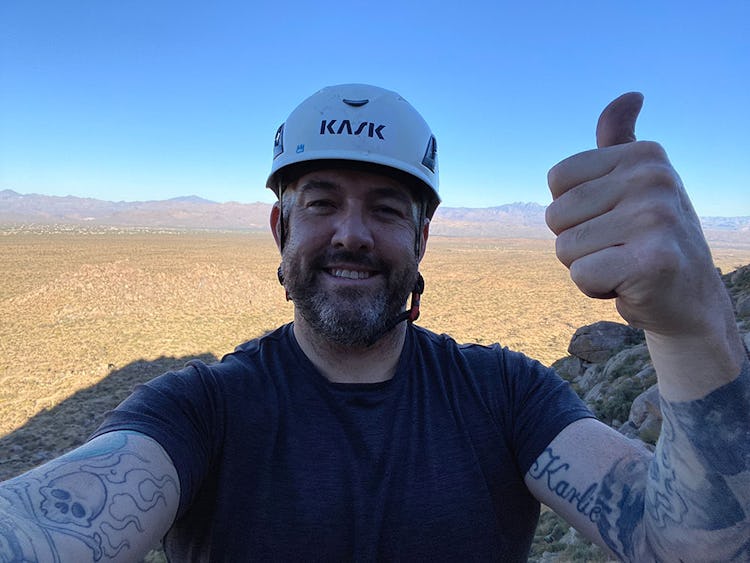
This time I really crushed it. I didn’t miss a day. My diet was on point. Again, I missed the mark, I wasn’t a finalist, but I finally recognized after that second Challenge that I was missing the bigger picture. It’s really about the group and working with others. The crazy thing is, even though I wasn’t a finalist, I probably grew way more than if I had been one. I learned persistence. I didn’t walk away. Now, over a year later, I’ve created this consistency of taking care of myself and knowing what I need to do.
I wouldn’t have been able to do it without the Tribe and getting attention from coaches like yourself and John Wolf [Onnit’s Chief Fitness Officer], giving us that little bit of extra time. I feel like you guys are my best buddies, and I can just talk to you guys and you’re going to answer.
Heins: Thank you for being so open to sharing the mindset that you had going in and the adjustment that you felt yourself go through along the way. I think that’s something that is really important to acknowledge—the idea that the Onnit 6 Challenge is a fitness challenge or a transformation challenge is something that we’ve had to work at creating a different connotation around. People see “fitness challenge” and they think it’s only about transforming physically. So they think they only have this set amount of time to do it and that they have to lose as much weight or put on as much muscle as possible.
While the Onnit 6 Challenge is transformational physically, it’s also transformational mentally and emotionally and spiritually. And I think that part of it is really from the Tribe that we continue to nurture. I think I can say with absolute sincerity that the nurturing of that space isn’t just from us at Onnit. We maybe help hold the rudder, or did, but it’s folks like yourself, members of the Tribe, that have really championed what a transformation can look like and continue to provide the kind of support that you guys do. Being able to highlight that and celebrate that is huge because, for a lot of new members, they come in maybe feeling like they’re not that awesome. Or think, “I’m not in shape enough.”
We heard that a lot about the Onnit Gym, especially in the early days. People would come in and go, “Oh my gosh, this is my jam. This is where I want to be. I just need four months.” And we’d say, “What? Why do you need four months? You’re welcome now.” And they’d say, “Well, I have to go get in shape first so that I can come here.”
We’d have to reassure them that coming to the gym is part of the process of a journey—if you start it now, you’ll find your way to being in the shape you want later. They see Eric Leija and John Wolf in the gym and think, “Can I keep up?” But even Eric and John didn’t start in the shape they’re in now.
I think that same type of hesitation can happen from afar. So to be able to have this space where folks can kind of go, “OK, this Tribe is very supportive, and the transformation they’re offering is coming from a perspective of longevity and performance” is really helpful. Then they see that it’s not just going to be six weeks—six weeks is just the beginning of the ongoing journey.
Then there are folks on the other end of the spectrum, like yourself, who are competitive, who are already active, who are like, “No, man. I got this.” That’s a great energy to be coming to the Tribe with, but even those people will go through a process of discovery and sharing. You’ve continued to be an amazing example for everybody within the community, and continue to encourage and champion everybody. So, thank you very much.
Mejia: Thanks!
Heins: You’ve said that one of the greatest things about the Challenge was learning to be consistent. Has that translated in any way to the things you were passionate about prior to connecting with Onnit?
Mejia: Well, one thing I do want to point out is that, when I started with the Onnit 6 Challenge, I had come off an ankle injury from playing soccer. I remember those first couple of weeks of workouts and thinking that I was going to die doing those kettlebell iso-holds [laughs]. I thought I was going to throw up. I didn’t know how I was going to get through that first week, but it definitely got better. And even right now, I started this last Challenge dealing with an injury. But I’ve still been able to do a lot of great things. I’ve been able to just recover better in general. I’ve learned so much about how to adapt and grow with my body.
I’ve been able to do quite a bit more this year because I’m in better shape by consistently training. Rock climbing, juggling a toddler. I take any chance I can to get out of the house and go do something active, and I do it so much better now.
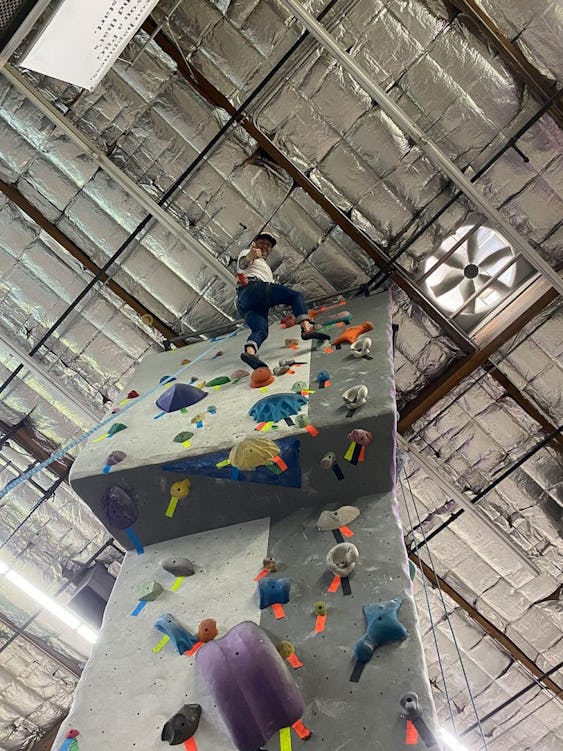
Heins: Thank you for clarifying that because, for a second, I thought you said you rock climb while you’re juggling a toddler. I was like, “Man.” [Laughs]
Mejia: No, no! But I did notice my ability to be active really increase this last season. There was an opportunity from a good friend of mine, Alex. He called and asked if I wanted to ski in Alaska. Within 24 hours, I was on a plane to Anchorage and was heli-skiing, which was not something I had planned for. It was one of those once in a lifetime things that you just don’t expect. So, thanks to my buddies Alex and Phil for making that happen.
But yeah, being up there, I was healthy and in tune with my body. Being able to fly down the hill at X miles per hour, and just feeling in control of myself was just absolutely an amazing experience. I think the yoga we do in Onnit 6 really helped with that. I’ve become a subscriber to Black Swan Yoga as well.
So here I am in Alaska, and everybody’s in the bar drinking, and I am in the little gym that they’ve got and I’m swinging kettlebells and doing yoga—that’s just what my life is now. For a guy who’s about to be 47 years old, that’s huge. To be in a place that really allows me to grow. I’m just really grateful, really blessed, that I’ve been able to find the community and introduce this into my life. In recovery, I found myself again. I found sobriety and I found who I was, and I kind of found my heart, my soul again. I needed to connect that other stuff to my body. When I came to Onnit, I was able to connect my body to these other parts. For me, they all go in line. If one part is kind of failing, I feel it over here. And if I’m kind of failing over here, I feel it over there. And so it’s really come into balance.
Heins: Beautifully said. Thank you. I think it’s interesting, the connection of the body, the mind, the heart, and the soul. All these components that we can’t touch and feel, so they’re sort of in this ethereal place. I remember hearing this quote, and it always bugs me that I can’t remember where I heard it or who said it, but it just always stuck out. “We’re not human beings having a spiritual experience, but in actual fact, we’re spiritual beings having a human experience.” Part of being human is living in this physical world. And if we have the ability to connect to that and express that, it continues to feed the rest of the whole.
Mejia: Coming to Onnit, I had to again become humble to learn. I had done gym stuff before and I had no direction. I had to admit that I don’t understand this kind of working out and I need help, and I think, like I said, the best thing I learned from Onnit is that I don’t know anything. If I remain teachable, then things seem to get better. And when I came to Onnit, I think that’s what happened.
Before, I never thought about spending 20 minutes on a warmup or 20 minutes on a cooldown, or taking a day of yoga for myself. It was, “Let’s run an hour of cardio and go throw some weights around, probably hurt something, and then not go back to the gym for a couple of weeks—and then go back alone.” Now, even though I’m at home by myself, I don’t feel so alone due to the Tribe. The support from you guys—John Wolf, Juan and Eric Leija, and Maggie Smith [Onnit’s Social Media Specialist].
An experience I had with Maggie was a prime example of me asking for help, because when it was time for me to buy my mace, I reached out to Maggie and I asked about the mace. I thought I’d get the 25-pounder and, man, I’m so glad I did not. Maggie was like, “Get the 10. I know it doesn’t sound like much¦ just get the 10.” I got the 10 and I was like, “Wow. OK.” I had to ask and listen and trust the people that do this for a living. I had to let go of that ego and pride. I think a lot of people walk in the door and they’re just so filled with ego and pride, and you have to shed that like a layer of an onion.
I had to say, “Hey, you know what? I’m here to learn. I don’t know everything, and it’s OK.” It’s OK to be teachable.
Heins: Well, thank you for your trust. For myself, and I know for John and Maggie and everybody else that’s involved, any opportunity we have to keep contributing in these ways is so meaningful. And I think we are reminded to also be in that state, to be humble and to learn. I learn from you and each and everybody else in the Tribe. I think that’s why these Stories are so valuable, because your story is one of the threads through the fabric of Onnit’s story. And we’re honored to be able to say that.
Let’s see here. There were a few questions that popped up from our viewers. This one is from Korea Runner. “Is there a day where Onnit Tribe has a video cast like this?”
There is. We have a Facebook “Live at 5” every Friday at 5:00 p.m., CST, in the Tribe. You don’t just hang out with myself or John Wolf. You hang out with Anthony and everybody else who jumps in on a very consistent basis, commenting and sharing how the week has gone. Anything you’d like to add to that, Anthony, about those Lives?
Mejia: For people who don’t know, The Tribe is this community on Facebook that you can ask to join. I’m not sure what the count is, but I know it’s a pretty large group, and it really brings everybody together. I’ve found a lot of support and a lot of friends. I’ve met a lot of great people in the group. I think what’s really great is that you get to really see the diversity of the members.
I think one person asked a question one time about what our occupations are. We have nurses and accountants in the Tribe, so many different walks of life. So it was really neat to see how we’re so different, and that victory is different for everyone. We have somebody like myself who has a fitness background but kind of fell off who was able to get back to working out and being active. We also saw somebody who’s doing an Onnit program who couldn’t walk up the stairs at one point. Being able to do that is as big a deal to her as it is for me flying down the mountain at 55, 60 miles an hour.
Heins: Let’s see. We got one from Sarah Williams. She says, “You are so inspiring, Anthony. You have so much going on, but it seems that you find time for yourself. Do you have any insights for someone who may be finding themselves on the edge of, ’I have too much going on, but I really need this?’”
Mejia: I think at the beginning of my first two Challenges I had more time than I do now. So now, looking back on it, what I thought was really tough was really easy, and I had a lot more time than I realized. I think we’re really hard on ourselves. We don’t give ourselves enough grace, and sometimes we can only do what we can only do.
We can only push ourselves to a point where we can also keep in balance to stay healthy. I can’t push fitness to a point where I’m neglecting my kids or my job. What’s been great for me was adding the Black Swan Yoga. Doing our Move and Grooves, which are short, low-intensity workouts that just get you moving.
But I think you have to find the time. If you take the time to look at how much time you spend on your phone, how much time you look and see what you’re doing on your apps¦ Right? You can find 30 minutes to give to yourself. You have to make a conscious choice to take care of yourself.
Sometimes that can be difficult. Maybe I don’t want to do that. Sometimes it’s “the couch is feeling good right now,” or, “I’d rather go to bed right now.” Sometimes I’ll have to squeeze the workout in before bed. Sometimes those are the best times—when everyone’s quiet. I’ll tell you, as soon as I’m done, I am so happy that I did it.
There has to be a willingness to make the change, and I think that was a huge aspect for me in recovery. My life was a mess, and I beat myself up pretty bad, and I had to be willing to change. I had to be willing to make the changes to get my life on track. If I’m not willing to make any changes, and I want to keep doing things the same way, things are going to stay the same.
Heins: Boom. If y’all need to hear that again, just go back and rewatch this because that was bang on. I think there was another one here from Powerlift Mom 79. She says, “Have you named your mace yet?”
Mejia: I haven’t named my maces. And Dr. Josh in the Tribe has been asking the same thing. Dr. Josh is one of our chiropractors in the group. He’s been working with me on a hip issue. He was hammering on me about naming my maces, and I just haven’t yet. But I’m working on it.
Heins: I love that we’re talking about naming maces and you have kettlebells hanging out next to a guitar behind you. Talk about art, man.
Mejia: Yeah. I have the guitar but I’m no good. I’m much better on the board than I am the guitar, but I do love it. I do my best. [Laughs]
Heins: We all have things that we can work on, right? There’s a couple other questions… Maybe we have time for one more. Oh, there’s a shout out from Melanie Giles.
Mejia: She’s been a great example too. I mean, she’s one of my sisters in recovery, and I think that’s a good thing to kind of point out. In the Tribe, there are a lot of people that have been through some stuff, and there’s been a lot of growth. Melanie is one of the ones that I’ve enjoyed following and learning a little bit about. She is a semi-finalist in one of the Challenges, and a great inspiration if you join the Tribe.
Heins: Yeah. It’s amazing to start thinking about all the people there, and you kind of start going, “Wait, wait, hold on. There’s more.”
Mejia: There is not enough time.
Heins: The last question, which I think is a good one, is, “If you can encapsulate it, what’s the best advice you can give to someone who is new to the Onnit Tribe?”
Mejia: I think you’ve just got to come in with an open heart. I would have probably done the bodyweight Onnit 6 first, also. Get to know yourself! I did bodyweight after kettlebells, and man, that was a rough onw. That’s when I realized I’m not mobile in these areas and I have a lot of work to do.
Also, letting go of that ego and pride is a big thing. People want the end result now. They want it today. But this thing is a process. It’s not instant gratification. You should be willing to take your time.
A six-week challenge does not sound like a lot, but when you’re constantly putting the work in physically and emotionally, you need to give yourself grace and time.
Explore your body and learn what your body can and can’t do. I think that’s what the Onnit 6 programs do. Man, I sweat more in the cooldown than I do in the workout. Talk about busted pipes [laughs]. I mean, my mat is a mess. But that’s where I get the most benefit. That warmup and that cooldown is opening up all those joints, and I’ve had fewer injuries in the past year thanks to that.
Heins: Those are huge. If anybody takes that advice, they will do well. All right, Anthony, I want to thank you. We have an Onnit Tribe member, a father, a partner, an adventurer in you. We have someone who is working on the art of living. And I appreciate you so much for taking the time to be with us today and share your story.
Mejia: Thank you for having me. It’s been a pleasure.
Heins: Thank you everybody who joined us here today. For more information on these ongoing Onnit Stories, which we will have coming at you every week, check out the Onnit IGTV, as well as elsewhere on our blog, our emails, and so on and so forth. Y’all, we’ll see you next week!
See more Onnit Stories HERE.
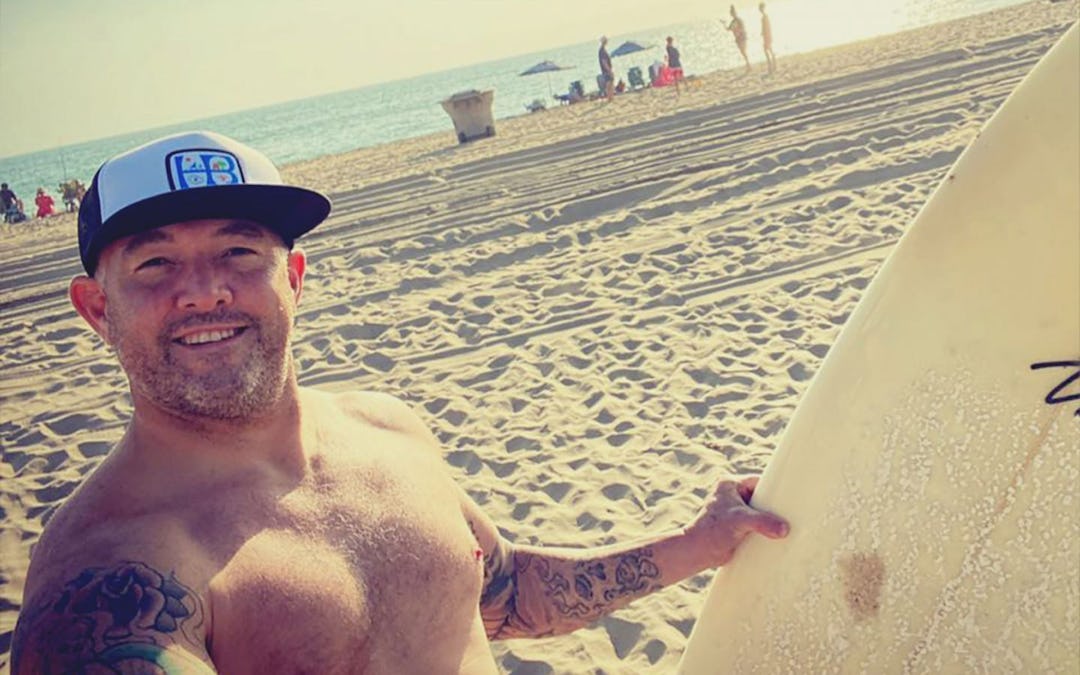
)


